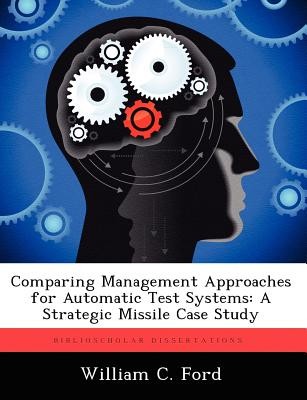
- We will send in 10–14 business days.
- Author: William C Ford
- Publisher: BiblioScholar
- ISBN-10: 1249590981
- ISBN-13: 9781249590989
- Format: 18.9 x 24.6 x 1 cm, softcover
- Language: English
- SAVE -10% with code: EXTRA
Comparing Management Approaches for Automatic Test Systems (e-book) (used book) | bookbook.eu
Reviews
Description
From 1980 to 1992, the DoD spent over $50 billion acquiring Automatic Test Systems (ATS) used to test weapon systems. At that time, procuring unique ATS to support single weapon systems was the norm. In 1994, the DoD made a dramatic change to their ATS acquisition policy;common ATS that supported multiple weapon systems was preferred over ATS tailored to support a single weapon system. Expected benefits of thisnew policy included: more reliable equipment, increased supportability, decreased cost, smaller logistics footprint, and decreased manning. To date, the common ATS initiative has garnered little support AF-wide due to lack of substantive data supporting the expected benefits in a practical setting.The majority of the ATS procured in the 1980-1992 "bubble" is still in service but is facing severe aging and obsolescence issues.
EXTRA 10 % discount with code: EXTRA
The promotion ends in 19d.21:58:26
The discount code is valid when purchasing from 10 €. Discounts do not stack.
- Author: William C Ford
- Publisher: BiblioScholar
- ISBN-10: 1249590981
- ISBN-13: 9781249590989
- Format: 18.9 x 24.6 x 1 cm, softcover
- Language: English English
From 1980 to 1992, the DoD spent over $50 billion acquiring Automatic Test Systems (ATS) used to test weapon systems. At that time, procuring unique ATS to support single weapon systems was the norm. In 1994, the DoD made a dramatic change to their ATS acquisition policy;common ATS that supported multiple weapon systems was preferred over ATS tailored to support a single weapon system. Expected benefits of thisnew policy included: more reliable equipment, increased supportability, decreased cost, smaller logistics footprint, and decreased manning. To date, the common ATS initiative has garnered little support AF-wide due to lack of substantive data supporting the expected benefits in a practical setting.The majority of the ATS procured in the 1980-1992 "bubble" is still in service but is facing severe aging and obsolescence issues.


Reviews